By Elena del Valle
Photos by Gary Cox
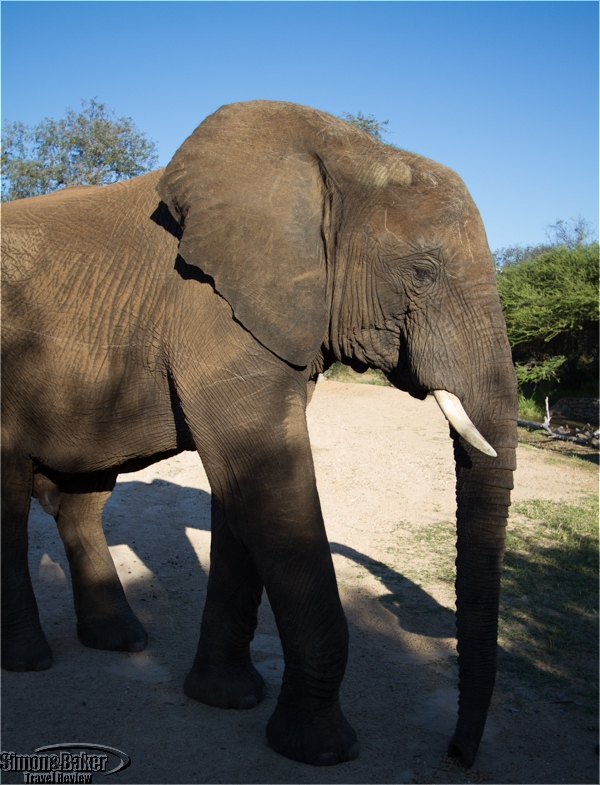
Jabulani, the camp’s namesake, at The First Meeting in May 2017
On our first visit to Camp Jabulani, a Five Star lodge near South Africa’s famed Kruger National Park, in 2008 we met some of the house elephants who had been raised or rescued by humans. After the young Jabulani, born in 1997, was abandoned by his elephant relatives when he became stuck in the mud the owners of the privately owned Big Five Kapama Reserve opened their hearts and their pockets to adopt him. In 2004, they established Camp Jabulani. When a herd of elephants in neighboring Zimbabwe was marked for slaughter they intervened, relocating the herd to their property.
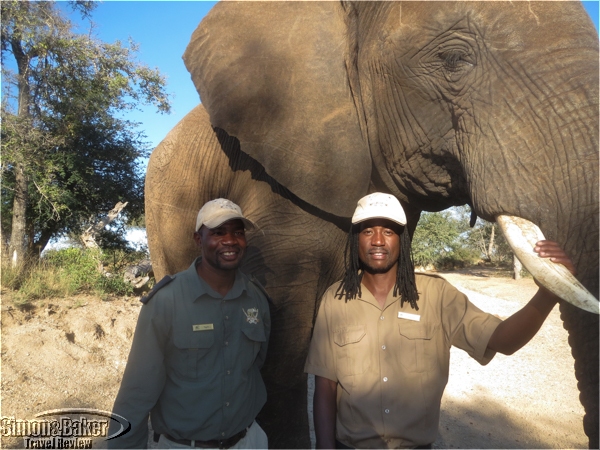
Left to right: Matipedza Tigere, elephant manager, and another staff member at The First Meeting, part of The Camp Jabulani Elephant Experience
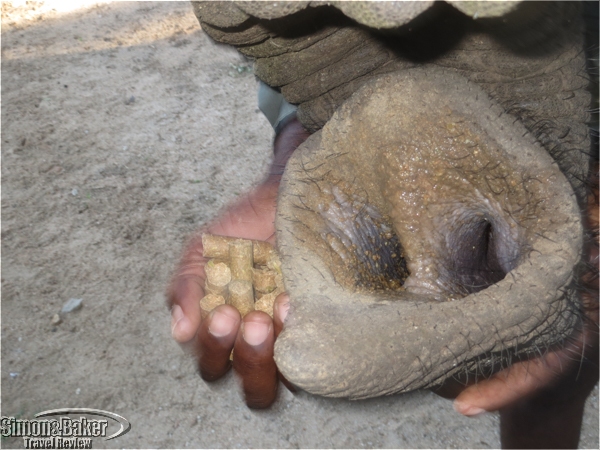
A staff member showed us how to feed the pachyderms pellets via the elephant’s trunk.
On that visit we met the whole herd, watched the staff tuck them in for the night and, most memorable of all, went elephant back riding. Earlier this year only weeks before our return, Camp Jabulani stopped offering elephant back rides. We wondered how the changes would affect our visit. We need not have worried as we had a comfortable stay and rewarding elephant experience at the luxury lodge.
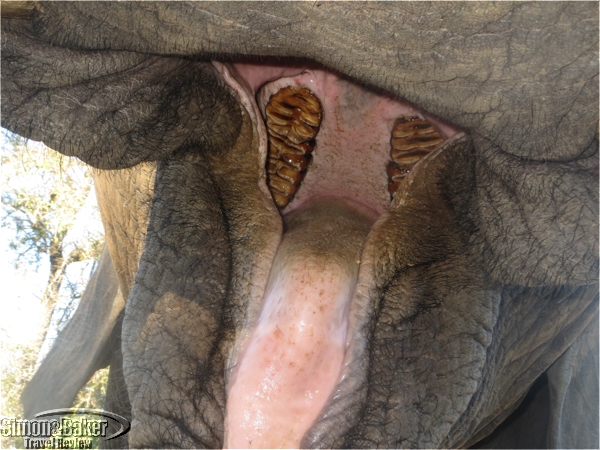
A closeup look at the elephant’s huge molars
“Camp Jabulani is a rather special lodge as it was established with the sole purpose of providing and income to look after Jabulani and a herd of elephants rescued from Zimbabwe in 2002,” Christo Rachmann, general manager, explained. “Currently the cost of looking after our elephants is around R450 000,00 per month. By visiting Camp Jabulani guests are actively contributing to the well-being of these magnificent animals.”
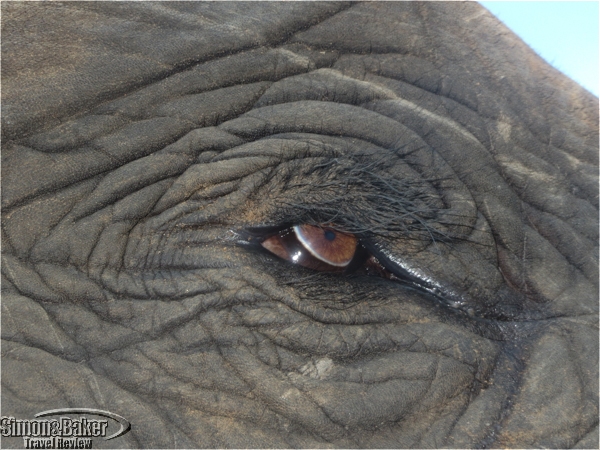
A closeup of the elephant’s huge eye and very long lashes was surprisingly difficult to photograph.
During our two night in stay in May 2017 we had The Camp Jabulani Elephant Experience. The day we arrived we had The First Meeting, part of The Camp Jabulani Elephant Experience. We spent a few minutes with Jabulani and another even larger young male. Under the watchful eye of Matipedza Tigere, elephant manager, we fed them pellet snacks, touched their skin and took photos. They smelled us with the tip of their trunk, quickly picked the pellets directly from our hands and let us run our hand along their side with surprising calm. Jabulani wrapped his trunk around my waist and dragged me gently yet firmly to one side (it was impossible to hold my position) until the elephant manager intervened.
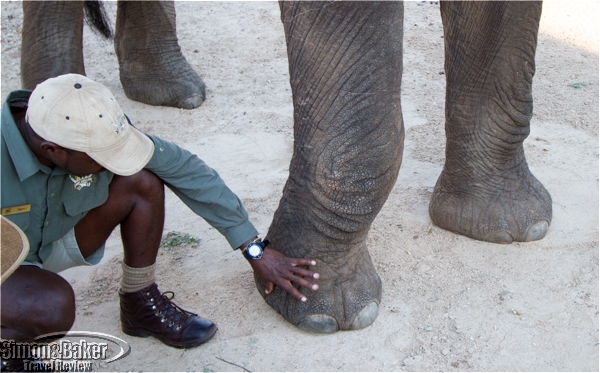
The elephant manager explained how an elephant’s foot carries its heavy body yet makes soft sounding footsteps.
Such nearness could give the false impression that elephants are easy to approach. Many safari trips have taught me that is far from true. I have a deep respect for the gentle giants. The elephants and the elephant manager’s relaxed demeanor reassured me as did his instructions. Tigere, a native of Chinhoyi, Zimbabwe, had 18 years of experience, and had a Field Guides Association of Southern Africa (FGASA) Level One Theory rating. He had been at Camp Jabulani since 2008. If he said it was safe to interact with the two huge creatures I believed him.
Because of the rescued elephants unique background the herd developed a positive atypical family structure. The staff explained that there are strong ties between male and female animals, and clearly established matriarchs have assumed responsibility for all infants, their own (five babies were born to the herd), as well as that of new orphans. The babies that have arrived in the last five years were successfully introduced to the herd with minimal human intervention. According to promotional materials, the managers and owners of Camp Jabulani planned to continue to rescue and rehabilitate elephants in need.
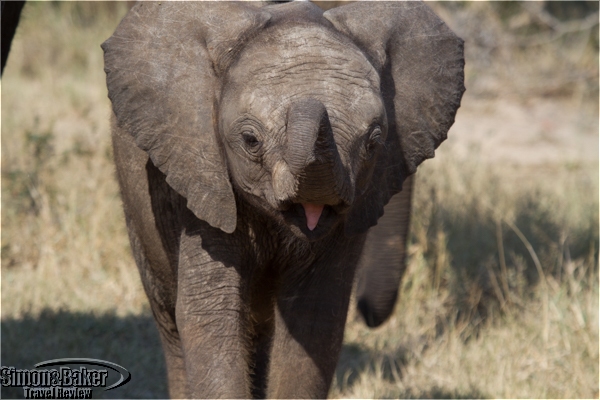
The youngest member of the herd was curious about our vehicle when we came to watch them play in the water
The following day at noon we waited for the 15 semi-tame elephants of the house herd to enter the water hole, hoping they would bathe. That was the In Their Element activity, also part of The Camp Jabulani Elephant Experience. We watched from our vehicle and they watched us back, curious. When playful elephants approached our vehicle our guide reversed, avoiding contact. A couple of times he revved the loud engine to make a particularly nosy elephant retreat. When we asked if there was danger he explained that wasn’t the case. They were curious about us and wanted to explore. The problem was that if an elephant brushed the new vehicle with its trunk it would damage the paint.
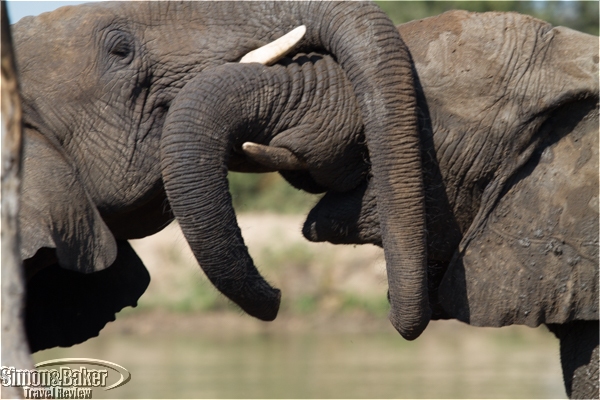
These younger members of the herd wrestled and played while we watched
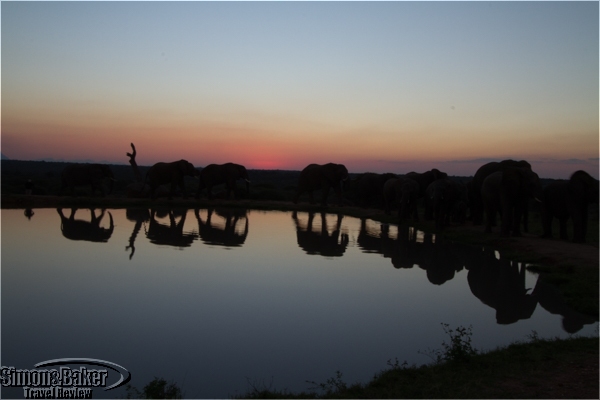
On the way to their pens for the night, the elephants paraded past our sun downer spot.
We watched the herd feed and interact. A number of elephant handlers sat around on the ground. We waved hello and they waived back. They called the youngest elephant to one side where they fed her a special extra nutritious blend from a bucket. For whatever reason the herd didn’t go in the water that afternoon. I didn’t mind much. Watching them so calm and playful was enough for me. A few minutes later the handlers rose to their feet, calling the herd away. As we drove back to Camp Jabulani I smiled. Our stay at the luxury property had been a pleasure, and seeing the elephants in close proximity the way we had was one of the main reasons.









